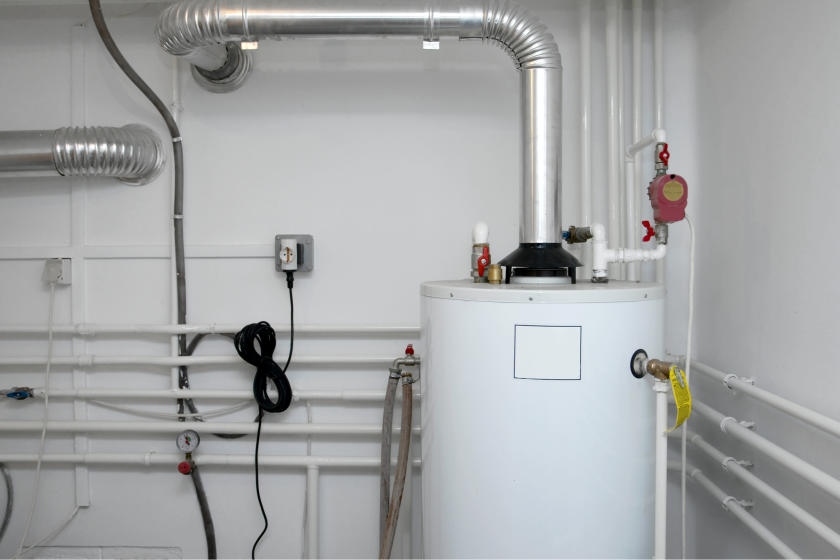We've discovered this post involving Tips on Maintaining a Water Heater listed below on the internet and concluded it made sense to quickly share it with you on this site.

Warm water is vital for everyday comfort, whether it's for a refreshing shower or cleaning recipes. To ensure your hot water system runs successfully and lasts longer, regular maintenance is vital. This post offers practical ideas and understandings on how to maintain your home's warm water system to prevent disruptions and expensive repair work.
Intro
Preserving your home's hot water system could appear challenging, yet with a few simple actions, you can ensure it runs smoothly for many years to come. This guide covers every little thing from recognizing your hot water system to do it yourself upkeep ideas and recognizing when to hire specialist aid.
Significance of Keeping Your Warm Water System
Regular upkeep not just extends the lifespan of your hot water system yet likewise guarantees it operates efficiently. Overlooking upkeep can cause decreased effectiveness, greater energy bills, and even early failing of the system.
Indications Your Warm Water System Needs Maintenance
Understanding when your warm water system needs attention can stop significant issues. Watch out for signs such as inconsistent water temperature level, strange sounds from the heating system, or rusty water.
Comprehending Your Warm Water System
Prior to diving right into maintenance tasks, it's handy to comprehend the fundamental parts of your warm water system. Usually, this consists of the water heater itself, pipes, anode poles, and temperature level controls.
Monthly Maintenance Tasks
Routine regular monthly checks can aid catch small concerns prior to they escalate.
Flushing the Water Heater
Flushing your hot water heater gets rid of debris buildup, improving effectiveness and extending its life.
Monitoring and Changing Anode Rods
Anode poles prevent corrosion inside the tank. Examining and replacing them when worn out is important.
Checking and Adjusting Temperature Settings
Adjusting the temperature level setups makes certain optimum performance and safety.
DIY Tips for Maintenance
You can perform several upkeep jobs on your own to maintain your warm water system in leading problem.
Checking for Leaks
Frequently examine pipes and links for leaks, as these can lead to water damage and higher costs.
Examining Stress Alleviation Valves
Examining the stress relief valve ensures it functions appropriately and protects against extreme stress accumulation.
Protecting Pipes
Shielding warm water pipes decreases heat loss and can save power.
When to Call an Expert
While DIY maintenance is beneficial, some concerns need expert know-how.
Complicated Issues Calling For Expert Help
Instances consist of significant leaks, electric problems, or if your hot water heater is constantly underperforming.
Routine Professional Upkeep Benefits
Specialist maintenance can consist of complete evaluations, tune-ups, and ensuring conformity with safety standards.
Verdict
Regular upkeep of your home's hot water system is crucial for effectiveness, longevity, and expense savings. By following these ideas and knowing when to look for professional assistance, you can ensure a reliable supply of warm water without unexpected interruptions.
How to Maintain an Instant Hot Water Heater
Before tinkering with your hot water heater, make sure that it’s not powered on. You also have to turn off the main circuit breaker and shut off the main gas line to prevent accidents. Also turn off the water valves connected to your unit to prevent water from flowing into and out of the appliance. 2. When you’re done, you have to detach the purge valves’ caps. These look like the letter “T†and are situated on either side of the water valves. Doing so will release any pressure that has accumulated inside the valves while at the same time avoid hot water from shooting out and burning your skin. 3. When the purge valves’ caps are removed, you have to connect your hosing lines to the valves. Your unit should have come with three hoses but if it didn’t, you can purchase these things from any hardware or home repair shops. You can also get them from retail stores that sell water heating systems. Read the user’s manual and follow it to complete this task properly. When the hosing lines are connected, open the purge port’s valves. 4. You should never use harsh chemical cleaners or solutions when cleaning your unit. Make use of white vinegar instead. It should be undiluted and you’ll probably use about 2 gallons. 5. Now flush your water heater. This task should probably take about 40 minutes. We can’t give you specific directions for this because the procedure is carried out depending on the type, model and brand of your heater. With that being said, refer to the user’s manual. 6. When you’re done draining the unit, you have to turn off the purge port valves again. Remove the hosing lines that you earlier installed on each of the water valves. Put the valve caps (purge port) back in their respective places and be very careful so as not to damage the rubber discs that are found inside these caps. 7. Now that everything’s back in place, check your user’s manual again to find out how to reactivate your water heating system. 8. Once it is working, turn one of your hot water faucets on just to let air pass through the heater’s water supply pipes. Leave the tap on until water flows smoothly out of it. https://www.orrplumbing.com/blog/2014/september/how-to-maintain-an-instant-hot-water-heater/

As a reader about Tips on Maintaining a Water Heater, I imagined sharing that blog post was a good thing. Feel free to set aside a second to distribute this entry if you liked it. Thank you for being here. Come back soon.
Book